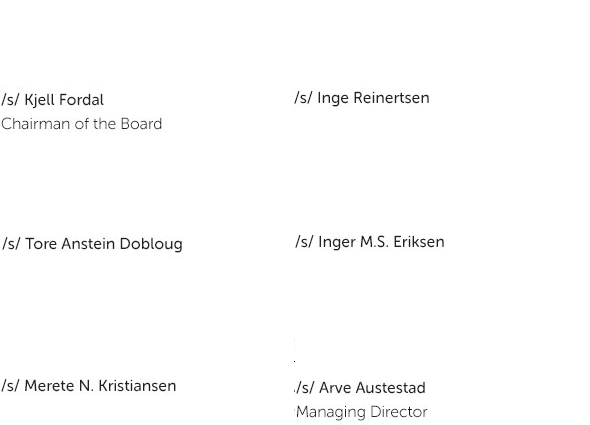Boligkreditt 1st Quarterly Report 2016
Statement of the board of directors
Cover pool and outstanding covered bonds 1
1 The cover pool consists of residential mortgages and liquid, highly rated assets (substitute assets). Covered bonds are shown inclusive of the market value of the derivatives deployed to hedge currencies and interest rates. The cover pool data detail for the first quarter 2016 was not yet available at the time of this report.
Key figures
| Q4 2015 | Q3 2015 | Q2 2015 | Q1 2015 | |
|---|---|---|---|---|
| Weighted Average Current LTV (%) | 52.1 % | 50.3 % | 49.2 % | 50.5 % |
| Weighted Average Original LTV (%) | 58.7 % | 58.3 % | 58.2 % | 57.3 % |
| Average Loan Balance (NOK) | 1,251,680 | 1,221,414 | 1,201,505 | 1,199,658 |
| Number of Mortgages in Pool | 134,895 | 135,688 | 133,422 | 136,032 |
| Percentage of non first-lien mortgages | 0.0 % | 0.0 % | 0.0 % | 0.0 % |
| Overcollateralization | 110.4 % | 111.2 % | 111.5 % | 111.3 % |
Key developments in the period
Boligkreditt issued a new seven year maturity in early March 2016, the bond was EUR 1 bn in size and found good reception in the market at a price of 23 bps above the swap curve in euro.
Compared to the previous seven year bond benchmark in late August 2015 which came at a spread of 8 bps, the credit spread now was materially higher, reflecting the market move since the late summer of last year. There have been some signs of a moderate spread tightening in the euro market since our bond issuance.
In the Norwegian covered bond market Boligkreditt issued approximately 7.2 billion Norwegian kroner, both fixed and variable rate bonds maturing. The pace of issuance in NOK has increased into the 2nd quarter.
Total capital coverage is 15.78 per cent as of March 31, 2016, Tier 1 capital coverage is 13.61 per cent and core capital coverage 12.49 per cent. The Company’s capital coverage target is to be above the minimum legal requirement, which is 15 per cent total capital from July 1, 2016.
Nature and development of the Company’s business
SpareBank 1 Boligkreditt AS is a credit institution licensed by the Norwegian Financial Services Authority (Finanstilsynet) and is operated according to the legislation for covered bond issuers in Norway which is enshrined in the law regarding financial undertakings(“Finansforetaksloven”) chapter 11, section II and the detailed regulations thereof.
We expect that the Norwegian Treasury Department will set a minimum overcollateralization level of 2 per cent for covered bond pools in the law’s associated regulations.
The purpose of the Company is to provide funding for the owners by buying residential mortgage loans with a loan-to-value (“LTV”) of up to 75 per cent and financing these primarily through the issuance of covered bonds2. The Company, which is based in Stavanger, is owned by banks which are members of the SpareBank 1 Alliance. An agreement is signed with each owner bank regarding the purchase and transfer of residential mortgages and the services which the owner banks owe to the Company and the Company’s customers in this regard (“Transfer and Servicing Agreement”).
The Company’s issuances of covered bonds take place under the EUR 25,000,000,000 Global Medium Term Covered Note Programme (GMTCN Programme). The Programme was last updated on April 23, 2015 and is available on the homepage: https://spabol.sparebank1.no.
One or more credit ratings from international rating agencies are important in order to be able to issue covered bonds. The Company have procured the services of Moody’s Ratings Service and Fitch Ratings to evaluate the credit quality of the issuances under the GMTCN Programme. The bond ratings are Aaa from Moody’s and AAA from Fitch.
2 New self-selected criteria for which loans qualify for the cover pool from the first quarter 2014 sets the limit at 70% LTV.
Accounts for the period
The quarterly accounts have been prepared in accordance with the International Reporting Standards (IFRS) as adopted by the EU and published by the International Reporting Standards Board (IASB).
The Board views the accounts as presented to be a true representation of SpareBank 1 Boligkreditt’s operations and financial position at the end of the first quarter 2016 (corresponding previous year in brackets).
The total balance sheet amounts to NOK 268 (229) billion. Lending to customers amounted to NOK 173 (164) billion as of 31.03.2016. Loan growth is in accordance with expectations. The Company’s liquid assets as of March 31, 2016 amounted to NOK 60 (35) billion, whereof approximately NOK 34 billion are funds received as collateral under ISDA agreements and the remainder is available to the Company as liquid assets.
The Company had during the first quarter net interest income of NOK 112 (103) million, including commissions earned by the ownership banks and accrued as an expense to SpareBank 1 Boligkreditt. The cost of operations for the first three months was NOK 8 (8) million including amortisation and depreciation. No additional amounts have been charged as loan provisions (write offs) during the first quarter of 2016, in addition to the NOK 8 million in cumulative group loan loss provisions as of 31.12.15. No actual loan losses have occurred. The pre-tax result was NOK 140 (320) million. The higher pre-tax result is mostly due to an increase in the book valuation of the Company’s basis swaps, which increased by 127 million kroner during the first three months of 2016 (please see note 3 and the annual report for 2015 for further details).
Risk aspects
SpareBank 1 Boligkreditt as an issuer of covered bonds is subject to strict rules regarding its exposure to credit, market, and liquidity risks.
This fact, and the aim of the maintenance of the AAA/Aaa rating, means that the Company is subject to low levels of risk and places strong emphasis on risk control.
Credit risk is defined as the risk that losses can occur as a consequence of that customers and others do not have the ability or willingness to meet their obligations to SpareBank 1 Boligkreditt. The portfolio, which consists of mortgages up to 75 per cent LTV, is the reason for why the Board of Directors assess the credit risk to be lower compared to other, universal and deposit taking banks 3.
Market risk is defined as the risk of losses due to changes in market rates, i.e. interest rates, exchange rates and the prices of financial instruments. At the end of the quarter SpareBank 1 Boligkreditt AS had covered bonds outstanding of NOK 185 billion at original (hedged) exchange rates, of which NOK bonds were approximately 55 billion and the remainder mainly in EUR and USD. All borrowing and investments with a fixed coupon and all borrowing and investments denominated in foreign currency are hedged by financial currency/and or interest rate swaps or through natural hedges, in order to convert the effective cash flow on this this debt to a NOK floating rate (3 months NIBOR). The Company receives collateral under the derivatives contracts from its counterparties subject to certain thresholds.
SpareBank 1 Boligkreditt AS records cash, bonds and treasury bills at the end of the period for a total of NOK 60 billion, whereby NOK 34 billion thereof is collateral received from counterparties in swap transactions and is not available as general liquidity. The bonds are Nordic covered bonds, Norwegian government debt and German SSA paper with a triple-A rating from Fitch, Moody’s or S&P. Deposits are placed in banks with a minimum rating of at least A/A2.
The Company had as of 31.03.2016 only moderate interest rate risk and immaterial amounts of currency risk.
Liquidity risk is defined as the risk that the Company is not able to meet its obligations at maturity or to be able to finance the purchase of loans at normal terms and conditions.
Liquidity risk is managed based upon a liquidity strategy approved by the Board. According to the strategy, SpareBank 1 Boligkreditt AS shall maintain a material liquidity reserve with a minimum size of covering all maturities within 6 months, and 50 per cent of all maturities between 6 and 12 months. Additionally the Company shall at any point in time be able to meet its interest payments, including derivatives, which come due in the next three months under a scenario where no interest payments are received from the loan portfolio. SpareBank 1 Boligkreditt AS’s liquidity situation is considered to be good.
Operational risk is defined as risk of loss due to error or neglect in transaction execution, weakness in the internal control or information technology systems operational breakdowns. Reputational, legal, ethical and competency risks are also elements of operational risk. This risk is considered to be moderate.
The Company is focused on identifying, measuring and managing central areas of risk which contributes to that Boligkreditt achieves its strategic goals. Reference is made to the annual report 2015 for more information on this.
3 Eligibility criteria for the sale of mortgage loans to Boligkreditt include a maximum 70% LTV from the end of the first quarter 2014.
Future prospects of the Company
The Company has a portfolio of residential mortgage lending with an average loan to value of approximately 50 per cent and no loans are in default.
Residential real estate prices have increased moderately in Norway during the first three months of 2016, and stand at a high level. However, the house price development in the region dominated by the oil industry is weaker than the national average. That house prices nationally increase should be seen in the context of declining interest rates in Norway, also for residential mortgages, together with high demand for property, especially in central areas. Even if the unemployment rate is at a low level in Norway (4.8 per cent in January 2016) it has been on an upward trajectory since late 2014. Despite the current higher uncertainty in the Norwegian economy, the prospects for the Company are considered to be good and stable. The Board base this conclusion on a geographically well diversified loan portfolio without arrears, low LTVs, a strong history and institutional framework in Norway for loan performance, as well as the low unemployment environment.
Macroeconomic development 4:
Since the summer of 2014, the Norwegian economy has been experiencing a clear downturn. Oil prices have plummeted and oil investments have fallen markedly. Mainland Norway’s GDP increased in 2015 by just 1.0 per cent; the weakest growth since the financial crisis in 2009. Unemployment has been increasing to a seasonally adjusted 4.8 per cent in January 2016, but several analysts consider that the peak for the cycle in unemployment has been reached, although uncertainty remains. The bright spots in the Norwegian economy may be summarized in the regaining of competiveness with the krone depreciation and a focus on costs in industry, as well as a large potential demand component represented by fiscal policy and the use of money from the sovereign wealth fund to stimulate activity.
Economic outlook:
Investment activity has been falling in the oil industry, but the rate of decline is now set to decrease. On the other hand, mainland investments are likely to grow in 2016 (over 3 per cent) with a number of large industrial projects and various projects within power supply providing clear impetus for growth. Higher public spending as well as an increase in traditional goods and services exports also contribute to growth. The Norwegian monetary policy rate is at an all-time low of 0.5% in order to support demand, including household consumption, which grew by 2% in 2015 and is expected to grow at 1.2% in 2016. The economic forecast in the table below includes an expectation that oil prices will gradually increase to USD 50 per barrel in 2019.
4 Macroeconomic prospects and projections have been sourced from Statistics Norway as of March 10, 2016.
| Projections (%) | 2015 | 2016 | 2017 | 2018 |
|---|---|---|---|---|
| GDP growth mainland | 1.0 | 1.4 | 2.3 | 2.4 |
| Unemployment rate | 4.4 | 4.7 | 4.5 | 4.3 |
| CPI growth | 2.1 | 2.4 | 2.0 | 2.1 |
| Annual wages | 2.8 | 2.5 | 2.4 | 2.7 |
The Board of Directors affirms that they consider the financial accounts to present a correct and complete picture of the Company’s operations and financial position as of March 31, 2016.
No events have occurred after March 31, 2016 which are expected to have a material impact on the accounts for the period ending March 31, 2016.
Stavanger, March 31, 2016 / April 26, 2016
Board of Directors of SpareBank 1 Boligkreditt AS



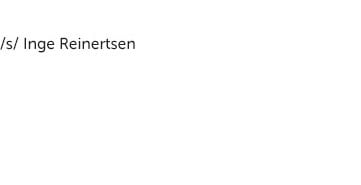



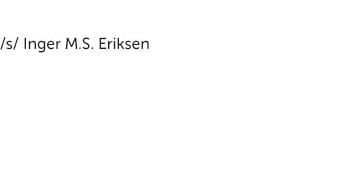

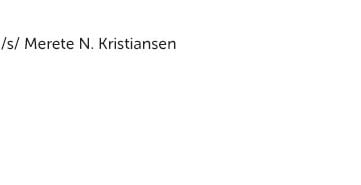

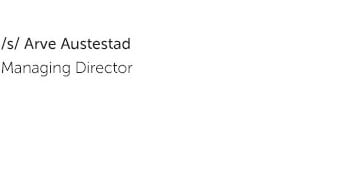
SpareBank 1 Boligkreditt AS
- Statement of the members of the board and the chief executive officer
The Board and the chief executive officer have today reviewed and approved the financial accounts for the first three months of 2016 for SpareBank 1 Boligkreditt AS. The accounts have been prepared in accordance with the International Reporting Standards (IFRS), as adopted by the EU.
To the best knowledge of the board and the chief executive officer the accounts have been prepared in accordance with applicable accounting standards and give a true and fair view of the assets, liabilities, financial position and profit or loss of the company taken as a whole as of March 31, 2016.
The board of directors and the chief executive officer declare to the best of their knowledge that the annual report gives a true and fair view of the development and performance of the business of the Company, as well as a description of the principal risks and uncertainties facing the Company.
Stavanger March 31, 2016 / April 26, 2016
The Board of Directors of Sparebank 1 Boligkreditt AS
